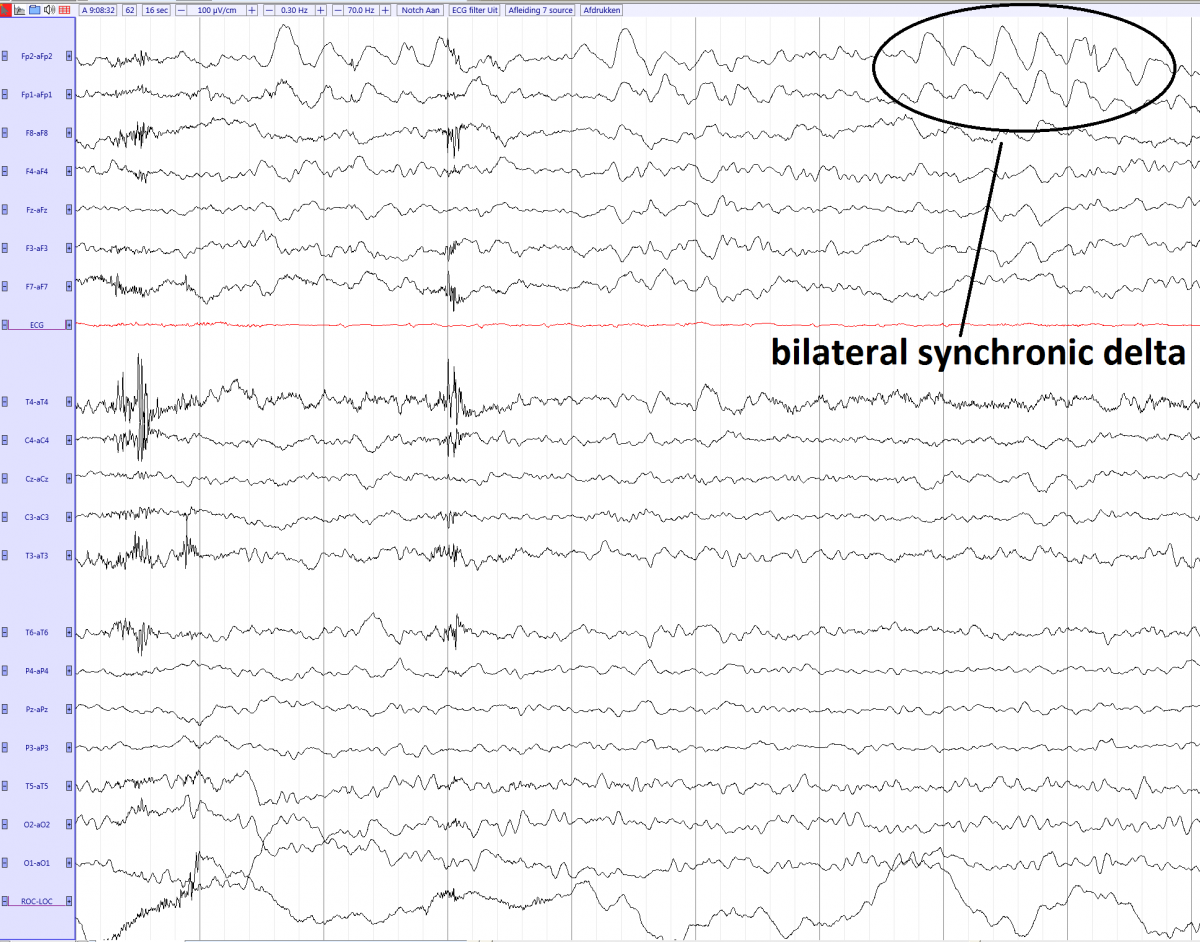Normal slowing during hyperventilation
From EEGpedia
During hyperventilation:
- Bilateral synchronic delta activity
- Most prominent in the frontal area
- Generally in persons up to 30 years old
- Disappears after around 30 seconds after hyperventilation was stopped
- Prolonged slowing during hyperventilation has no pathologic meaning (sometimes is hypoglycemia the cause)
- The lack of this response has no pathologic meaning
- OIRDA (occipital intermittent rhythmic delta activity) during hyperventilation is normal in children, however not in adults
- Sometimes the alpha rhythm becomes more prominent during hyperventilation, probably due to a relaxing effect of hyperventilation
- Sometimes the responsiveness decreases during hyperventilation, this altered responsiveness during hyperventilation-induced EEG slowing is a non-epileptic phenomenon in healthy children. [1]
Bilateral synchronic delta activity in the frontal area during hyperventilation (source)

Notes
- ↑ Epstein et al, Altered responsiveness during hyperventilation-induced EEG slowing: a non-epileptic phenomenon in normal children, epilepsia, 1994 Nov-Dec;35(6):1204-7.